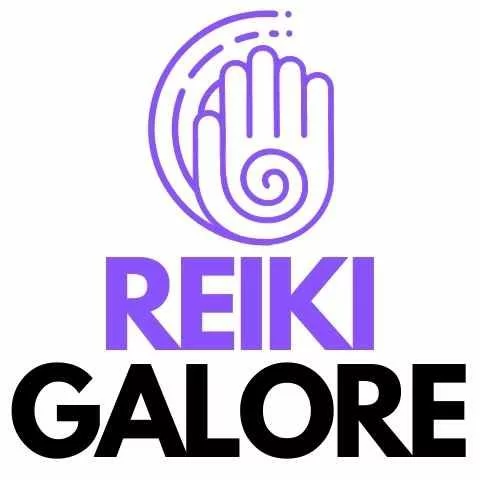So you’ve heard about Reiki and you’re curious about what a Reiki table is used for. Well, a Reiki table is a specially designed table that is used in Reiki sessions. This table provides a comfortable and supportive surface for clients to lie on while receiving Reiki energy healing. It allows practitioners to easily access different parts of the client’s body and perform various hand positions to channel and direct healing energy. By using a Reiki table, both the practitioner and the client can experience a more effective and relaxing Reiki session.
Overview
What is a Reiki table?
A Reiki table, also known as a massage table or healing table, is a specialized piece of furniture designed to provide a comfortable and supportive surface for Reiki practitioners to perform their healing work on clients. It is an essential tool in the practice of Reiki, a Japanese healing technique that promotes energy flow, relaxation, and holistic well-being.
The purpose of a Reiki table
The main purpose of a Reiki table is to create an ideal environment for the energy healing process in Reiki sessions. By providing a comfortable and stable surface, it allows the practitioner to focus on channeling and transferring positive energy to the client’s body. The table acts as a conduit, facilitating the free flow of energy from the practitioner’s hands to the client’s body, promoting deep relaxation, stress reduction, and physical and emotional healing.
Components of a Reiki Table
Table frame
The table frame is the foundation of a Reiki table and is responsible for its stability and durability. It is usually made of high-quality wood or metal and designed to support the weight of both the client and the practitioner. The frame is constructed in a way that allows easy folding and unfolding for portability.
Foam padding
Foam padding is a crucial component of a Reiki table as it provides comfort and support to the client during the session. The foam is typically made of high-density materials that offer optimal cushioning without sacrificing stability. The thickness and resilience of the foam can vary, allowing practitioners to choose the level of comfort and firmness that suits their clients’ needs.
Table cover
The table cover, also known as a table sheet or upholstery, is a removable and washable fabric that provides a hygienic and clean surface for the client. It not only enhances the aesthetic appeal of the table but also adds an extra layer of comfort. The cover is available in various materials like cotton, polyester, or microfiber, each with its unique advantages and durability.
Headrest
The headrest is an adjustable attachment that allows clients to comfortably rest their heads during a Reiki session. It is designed to support the neck and head area, relieving tension and promoting relaxation. The headrest can be adjusted to different angles and heights to accommodate clients of various sizes and preferences.
Adjustable height
One of the key features of a Reiki table is its adjustable height mechanism. It enables practitioners to customize the table’s height according to their own comfort and the needs of the client. This feature ensures proper ergonomics for the practitioner, preventing strain or discomfort during the session. It also allows clients to easily access the table and get on and off without any difficulty.
Types of Reiki Tables
Portable Reiki tables
Portable Reiki tables are designed for practitioners who need to transport their table frequently or have limited space for storage. These tables are lightweight, foldable, and often come with carrying cases for easy portability. Portable tables are usually made of lightweight materials like aluminum, making them convenient for practitioners on-the-go or those who offer mobile Reiki services.
Stationary Reiki tables
Stationary Reiki tables are sturdy and more permanent fixtures in a practitioner’s workspace. These tables are typically made of heavy-duty wood or metal and offer enhanced stability and durability. They are ideal for practitioners who have a dedicated healing space or a clinic where the table doesn’t need to be moved frequently.
Electric Reiki tables
Electric Reiki tables are a relatively new innovation in the field, incorporating motorized height-adjustment mechanisms. These tables allow practitioners to effortlessly and precisely adjust the table’s height with the push of a button, eliminating the need for manual adjustment. Electric tables are beneficial for practitioners who prefer seamless functionality and ease of use.
Benefits of Using a Reiki Table
Comfort and support
One of the significant benefits of using a Reiki table is the comfort and support it provides to the client. The foam padding, combined with the soft table cover, offers a cozy space for the client to lie down and relax during the healing session. The ergonomic design of the table, including the adjustable height and headrest, ensures that the client’s body is properly aligned, reducing any discomfort or strain.
Stability and safety
A Reiki table’s stability is of utmost importance to ensure both the practitioner and the client’s safety. The sturdy frame and construction of the table provide a solid and secure surface for the client to lie on. This stability minimizes any risk of the table collapsing or wobbling during the session. Moreover, the adjustable height feature allows the practitioner to maintain the proper posture and alignment, preventing any potential injuries or strains.
Versatility and adjustability
Reiki tables offer great versatility and adjustability to accommodate various body types and specific client needs. The adjustable height feature allows practitioners to customize the table’s height for optimal ergonomics, whether they are working sitting down or standing. Additionally, the headrest can be positioned at different angles and heights, ensuring clients’ utmost comfort during the session.
Enhanced energy flow
The design and construction of a Reiki table are aimed at promoting the smooth and balanced flow of energy during a healing session. The open space beneath the table facilitates the practitioner’s movement and allows energy to flow freely. The high-density foam padding also helps to absorb excessive energy and prevent any disturbance or interference with the energy exchange between the practitioner and the client.
How to Use a Reiki Table
Preparing the table
Before beginning a Reiki session, it is essential to ensure that the table is clean and sanitized. Wipe down the table with a gentle cleaning solution, paying extra attention to the surface areas where the client will lie. This ensures a hygienic and pleasant experience for the client.
Setting up the table
If using a portable Reiki table, unfold the table carefully and lock it securely in place. Adjust the height of the table to a comfortable position for both you and the client. Ensure that all the components, such as the headrest and armrests, are in the correct position and securely attached.
Positioning the client
Invite the client to lie down on the table, ensuring that they are comfortable and at ease. Adjust the headrest according to the client’s preference, supporting their neck and head adequately. Allow the client to settle into a comfortable position and offer any additional support, such as blankets or bolsters, if needed.
Performing Reiki techniques
With the client positioned on the table, begin the Reiki session by starting at the head and working your way down towards the feet. Place your hands gently on or above the client’s body, allowing the energy to flow through you and into the client. Use various hand positions and techniques to address different areas or energy centers in the body, adapting your approach based on your training and intuition.
Different Uses of a Reiki Table
Reiki healing sessions
The primary use of a Reiki table is for facilitating Reiki healing sessions. It provides a dedicated and comfortable space for clients to receive energy healing. The table’s surface allows for easy application of Reiki techniques, such as hand placements and energy channeling. Whether the practitioner is working independently or in a professional setting, the Reiki table is the central tool that enables the healing process.
Massage therapy
Reiki tables are not limited to just Reiki sessions but are also commonly used in massage therapy practices. The cushioned surface and adjustable height features make them suitable for various massage techniques. Massage therapists can easily perform massages while sitting or standing, ensuring proper ergonomics and comfort for both the therapist and the client.
Energy work and spiritual practices
In addition to Reiki and massage therapy, Reiki tables can also be utilized for other energy work and spiritual practices. These may include modalities such as acupuncture, reflexology, meditation, or sound healing. The versatile design of the table allows practitioners from different disciplines to adapt and utilize the table to support their specific healing practices.
Choosing the Right Reiki Table
Considerations for choosing a Reiki table
When selecting a Reiki table, there are several factors to consider to ensure you choose the right one for your needs and preferences. Below are some key considerations:
Budget
Determine your budget range before starting your search for a Reiki table. Prices can vary widely based on factors such as size, quality, and additional features. Set a budget that aligns with your financial capabilities to narrow down your options and avoid overspending.
Size
Consider the size of the table and how it will fit into your workspace or any location where you plan to provide Reiki sessions. Ensure that the dimensions of the table align with the available space and that it allows for easy movement around the table during a session.
Weight capacity
Check the weight capacity of the table to ensure it can safely support both your own weight as the practitioner and the weight of your clients. It is crucial to choose a table that can handle the weight requirements without compromising stability or safety.
Portability
If you plan to offer mobile Reiki services or frequently transport your table, consider a portable option. Look for tables that are lightweight, foldable, and come with carrying cases or handles for easy transportation. Ensure that the table’s portability doesn’t compromise its stability or overall quality.
Maintenance and Care
Cleaning the table
Regularly clean and disinfect your Reiki table to maintain hygiene and prolong its lifespan. Use a mild cleaning solution and a soft cloth to wipe down the table’s surface and remove any dirt or oil residues. Follow the manufacturer’s instructions for cleaning specific materials used in the table construction, such as wood or metal.
Storing the table
When not in use, it is important to properly store your Reiki table to prevent any damage. Fold the table as instructed by the manufacturer and securely lock it in place. If the table came with a carrying case, use it to protect the table from dust and ensure it stays clean during storage.
Replacing worn-out parts
Over time, certain components of the Reiki table may wear out and need replacing. If the foam padding becomes compressed or loses its resilience, consider replacing it to maintain optimal comfort for your clients. Similarly, if any other parts, such as the table cover or headrest, show signs of wear or damage, it is advisable to replace them to ensure the table’s longevity and functionality.
Purchase Your Reiki Table Here
Common Accessories for Reiki Tables
Bolsters
Bolsters are cylindrical or rectangular cushions that provide additional support and comfort to the client during a Reiki session. They can be placed under the knees, ankles, or any other area that requires extra elevation or support. Bolsters come in various sizes and shapes to accommodate different body types and positioning preferences.
Blankets and sheets
Blankets and sheets are commonly used to cover the client during a Reiki session. Aside from providing warmth, they offer privacy and create a cozy and relaxing environment for the client. It is recommended to use soft and breathable materials that are easy to clean and maintain.
Carrying cases
Carrying cases are essential accessories for portable Reiki tables, as they protect the table during transportation and storage. These cases are specifically designed to fit the dimensions of the table, ensuring a snug and secure fit. Look for cases with sturdy handles or straps for convenient carrying.
Face cradles
Face cradles, also known as face rests or face cushions, are attachments that allow clients to comfortably rest their face while lying face-down on the Reiki table. They are often made of cushioned foam and are adjustable to accommodate different face shapes and sizes. Face cradles help relieve pressure on the client’s neck and allow for easy breathing during the session.
Armrests
Armrests provide additional support and relaxation for the client’s arms during a Reiki session. They can be attached to the sides of the table or positioned separately to cater to the client’s comfort. Armrests help alleviate any strain on the client’s shoulder and arm muscles, ensuring a comfortable and pleasant experience.
Conclusion
A Reiki table is a vital tool for any Reiki practitioner, providing a supportive and comfortable space for healing sessions. With various types of tables available, practitioners have the flexibility to choose an option that suits their specific needs. The benefits of using a Reiki table extend beyond Reiki sessions, as they can also be utilized for other healing modalities and practices. By considering factors like budget, size, and portability, practitioners can select a Reiki table that best fits their requirements. Proper maintenance and care, including regular cleaning and periodic replacement of worn-out parts, ensure the longevity and effectiveness of the table. With the right Reiki table and accessories, practitioners can create an optimal healing environment for their clients, promoting relaxation, balance, and overall well-being.
Get Your Own Reiki Table Today




